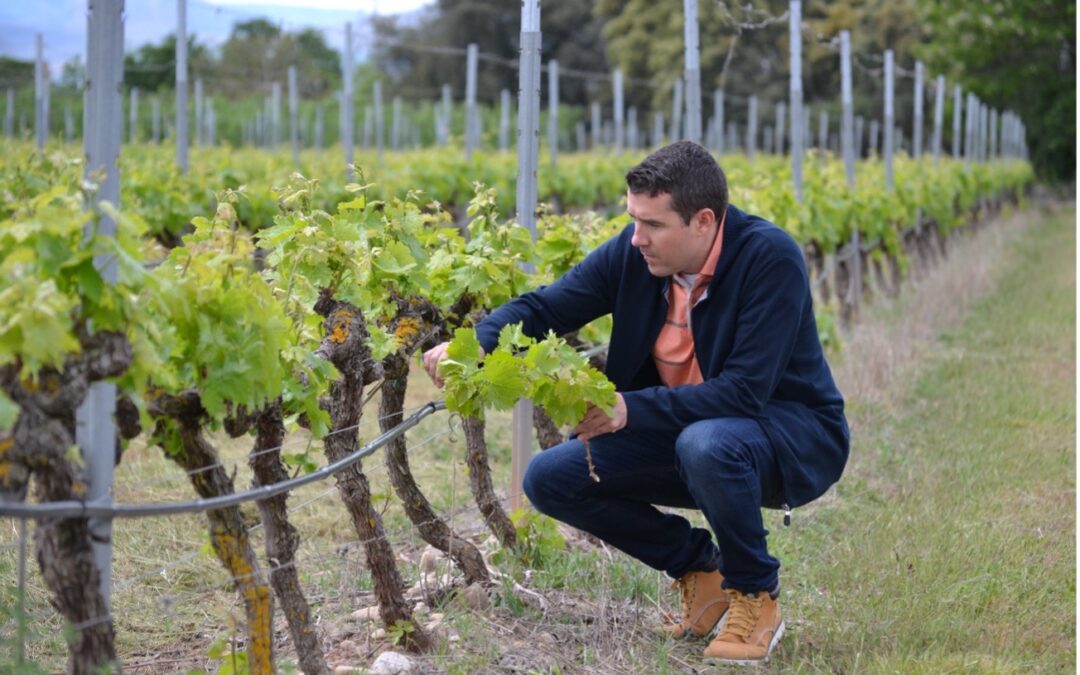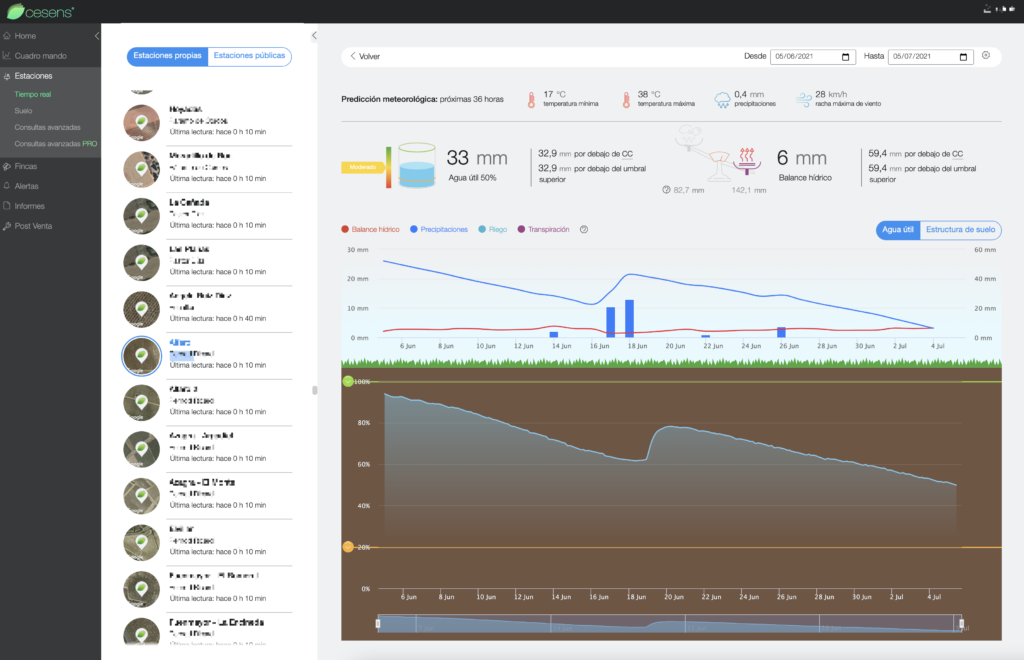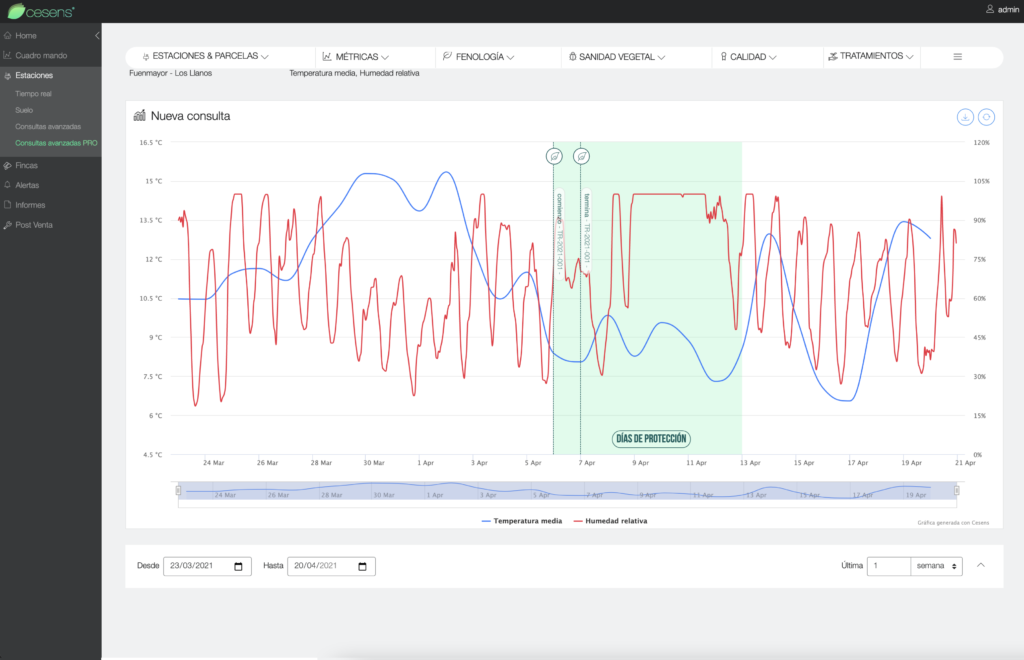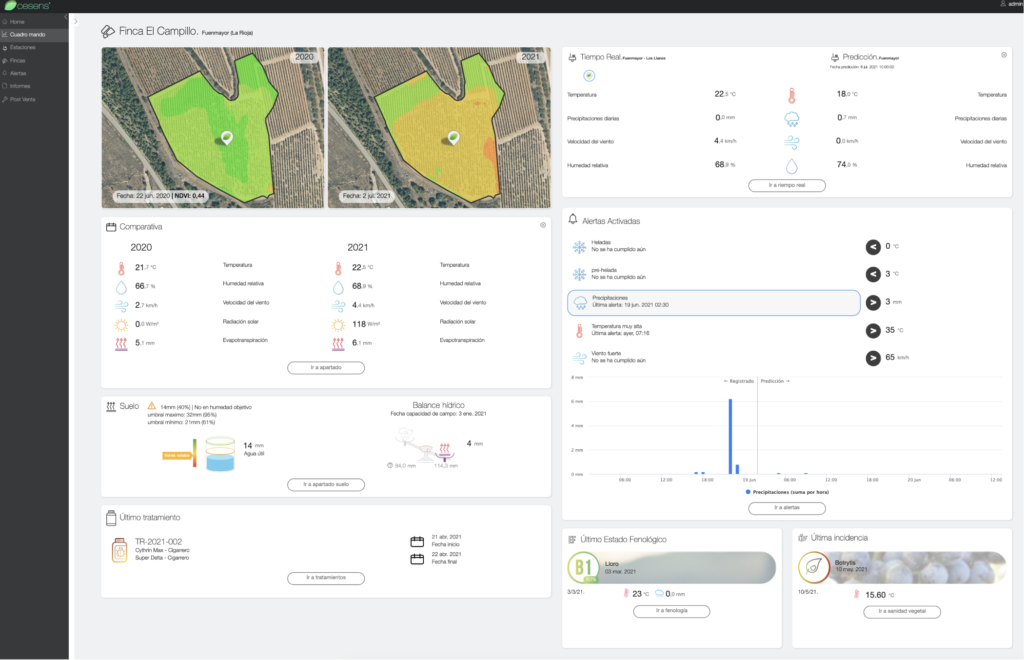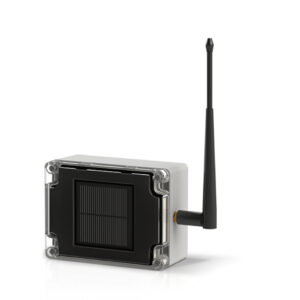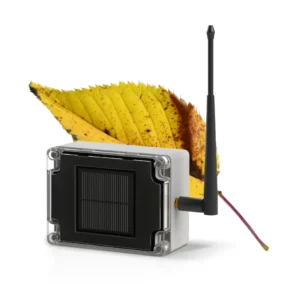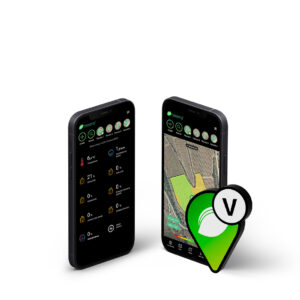In the field of agriculture, a series of important transformations have taken place from the agriculture 1.0, which integrated mechanization and steam engines, agriculture 2.0, marked by electricity, agriculture 3.0, characterized by robotics and automation, to the present, agriculture 4.0, which is precision agriculture.
The company Encore Lab and its crop monitoring system Cesens® have been working towards “Collaborative precision agriculture” for some time now, which combines precision along with the exchange of information. In addition to providing agroclimatic stations, they have also developed software that takes advantage of data exchanges from different agroclimatic stations to provide more global and continuous information, as well as work accurately on prediction models. The real-time availability of climatological data along with the data on phenology, pests or diseases through Big Data has led to the creation of predictive models at the microplot level, giving the user more useful information for decision-making.
The complexity of decision-making in the vineyard makes use of these essential tools, in a sector in which countless variables are used.
The possibility of working with the data of the crop and predictive models have the following benefits:
-
High production efficiency, that is, achieving the same or better results with fewer resources.
-
Significant quality improvement.
-
More reasonable and sustainable management of resources such as water or phytosanitary products.
-
Less environmental impact.
-
Traceability, as it allows us to record a history of incidents in our plots.
-
More proactive and efficient work scheduling
The existing awareness of climatic change together with sustainability and resource optimization policies, leads everyone in agricultural sector to work and collaborate in the same direction.
An example of working this way is Bodegas Vivanco, located in La Rioja, which has a crop monitoring system based on agroclimatic stations spread over each of its production areas. Artiz Espinosa, as the head of viticulture at the winery, tells us about his experience.
You have been working with weather stations for many years now. What parameters did you start monitoring and which ones do you use now?
At first, we were mainly concerned with the information on soil moisture related to dendrometry for calculating the water needs. Weather monitoring was done by having a database regarding our own microclimate and control it at specific times for treatment decisions.
But today, in addition to what has already been said, we are delving into monitoring the predictive models of diseases in each plot. What is collaborative precision agriculture for you?
We participate in R&D projects with several wineries, in addition to the UR and technology companies. The project consists of the “Development of a software tool capable of predicting the appearance of mildew at the plot level, based on a prediction model specifically developed for DOCa Rioja”. We think that it could be a very useful project and from which the entire Denomination could benefit.
Bodegas Vivanco also participates in the platform where they share the climatological data of the entire D.O.Ca. Rioja, promoted by Grupo Rioja. Both pests and diseases always develop from the easternmost part of the Denomination to the westernmost, due to the climatic differences of each area, data control of both is very useful. The best example we had was with the yellow spider, a vineyard pest that was observed to advance 20km upstream of the Ebro every year. This information, coming from the collaboration of numerous plots, and over several years, has made it possible to ascertain the dynamics that the plague is experiencing..
Among the data that the stations offer you, which ones do you give more importance to? And how do you work with them and how do you relate them?
To humidity, since it correlates a lot with the probable appearance of a fungus and with its condition, the phytosanitary treatments.
Despite the fact that treatments are always done preventively, being able to track data and relate them can give me guidelines to advance or delay a treatment, for example when the weekend arrives and we have to treat the crops because if we leave it for Monday, perhaps it is too late as we have had many days of humidity, high temperatures…
We spend many hours in the vineyard, but we can never control what happens 24 hours a day. Hence the meaning of these stations that measure continuously…
In your day-to-day life, has having access to these tools provided you with support or improvement in your work?
Yes, mainly in what we mentioned before about the predictive models to be able to fine-tune them. In Mildiu the development conditions are very clear as in Rioja, but in Oidio you cannot say when it appears. Powdery mildew is an endemic disease, with which preventive treatment will always be necessary, but here the success lies in performing 5 treatments instead of 8, having been more efficient.
Apart from the monitoring that you do through the stations, do you work with remote sensing?
Yes, working with both, the precision that drones offer you, as well as that offered by the satellite, which are becoming more and more accurate, I consider it to be a fundamental help, since they are very visual tools, both to select for the harvest, to treatments, work … being able to classify as zones and making stands within each of our plots. Not just on time, but all year round. If we combine the visual information with the numerical explanation of what may have happened at the at the climatological level or soil, we will understand much better what is happening in our vineyard and we will make better decisions.
Let us now see some practical uses of all the above:
Irrigation control
The monitoring of the values shown by the soil moisture sensors can give us guidelines for irrigation management in our vineyard.
In case of using volumetric content sensors, Cesens calculates the field capacity and the wilting point in relation to the soil structure. By calculating its useful water content, both in percentage and in mm, it offers the possibility to create an alert when the useful water content is below the chosen threshold, including decision-making regarding making a more aggressive or less aggressive thinning or tilling at times where humidity can be key to the development of any disease.
Disease Control
In addition to monitoring the predictive models of pests and diseases in the Cesens App, relating to parameters such as humidity, rainfall, useful water content in the soil, temperature … of our own farm, it will indicate the conditions in which the development of these incidents may be favored. This information helps us make decisions about treatments and to advance or delay them based on predictions.
Alert management
In recent years, frost damage has become common in much of the Spanish geography. By monitoring the temperatures and humidity of our crop with Cesens and creating alerts that takes into account one or both metrics, we can activate our anti-frost system, as we will receive a message on our mobile, in addition to receiving an email with the current information and frost forecast.
Crop management relating to climatic variables
Cesens can also be a useful tool for monitoring the phenology of our crop with being able to make comparisons between years and farms in different municipalities. This information will help us when it comes to managing the work within the winery, estimating the time of completion of the different tasks to be carried out in the field.
Monitor farms
Being able to monitor a farm and relate the data offered by remote sensing with the sensors, in addition to the phenology history data or incidences of pests and diseases that we can store in Cesens, makes the large wineries of the sector to work with these tools in their day to day. The agriculture 4.0 sector has evolved considerably in the last 15 years, causing considerable decrement in the costs and investments to be made by technicians and farmers. Having a complete agroclimatic station has gone from having a cost of about € 10,000 a few years ago, to a cost of € 1,500 today, being much more affordable for all users.

